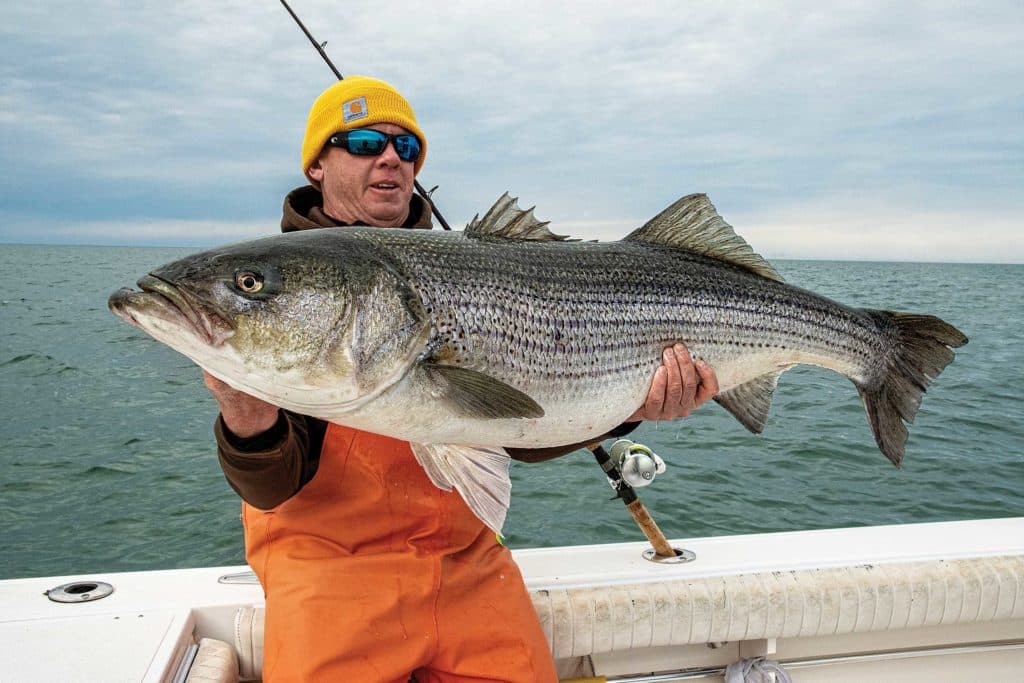
Scoring monster striped bass is a shared dream for thousands of coastal anglers, but few have hit on a tactic that consistently produces fish over the coveted 50-pound mark.
Last December, I fished with someone who has: Chuck Many, aboard Tyman, his 28-foot True World berthed in Cape Charles, Virginia. He’s been fishing for trophy stripers here the past six winters, towing his boat from Highlands, New Jersey.
We left the slip before first light, guiding the boat north, deeper into Chesapeake Bay, where he caught bass over 50 pounds on his last few outings. We’d use his proven technique, which works for monster bass wintering in the bay, as well as everywhere else he has tried it along the striper’s migratory path, in both spring and fall.
Eels and Planers
His primary bait is live eels, and while that’s nothing new, using them in the daytime, near the surface in deep water is a novel twist. Many’s interest in eel fishing was inspired by a Virginia captain who fished them under large floats in the Roanoke River. When he tried it near the mouth of Chesapeake Bay, he caught much larger bass. He has tried live menhaden and herring, and caught fish on both, but the eels outproduce other baits 5 to 1.
“It has taken years of trial and error to refine the way I fish today,” Many says, “and I’m still experimenting. One early realization was the more live eels I could put in the water, and the farther from the boat I could space them, the more big fish I caught. That led to trying side planers, and that opened up a world of opportunity.”
He initially bought planers made for walleye fishing, which worked in concept but were unstable in rough water. Searching for a suitable design, he found an aluminum-and-foam unit from Trophy Stalker Planers, with planer boards designed to spread out the trolling pattern, and to also act as attractors.
“I’ve had big bass charge the surface from 60 feet down and attack the planers,” Many says. “One monster ate the planer, got it caught sideways in its mouth, and screamed off a few hundred feet of line before it was able to spit it out. It’s crazy, I know, but mostly they grab the live eels trailing behind it. That’s why I usually keep leaders short, so the bait is close to the planer.”
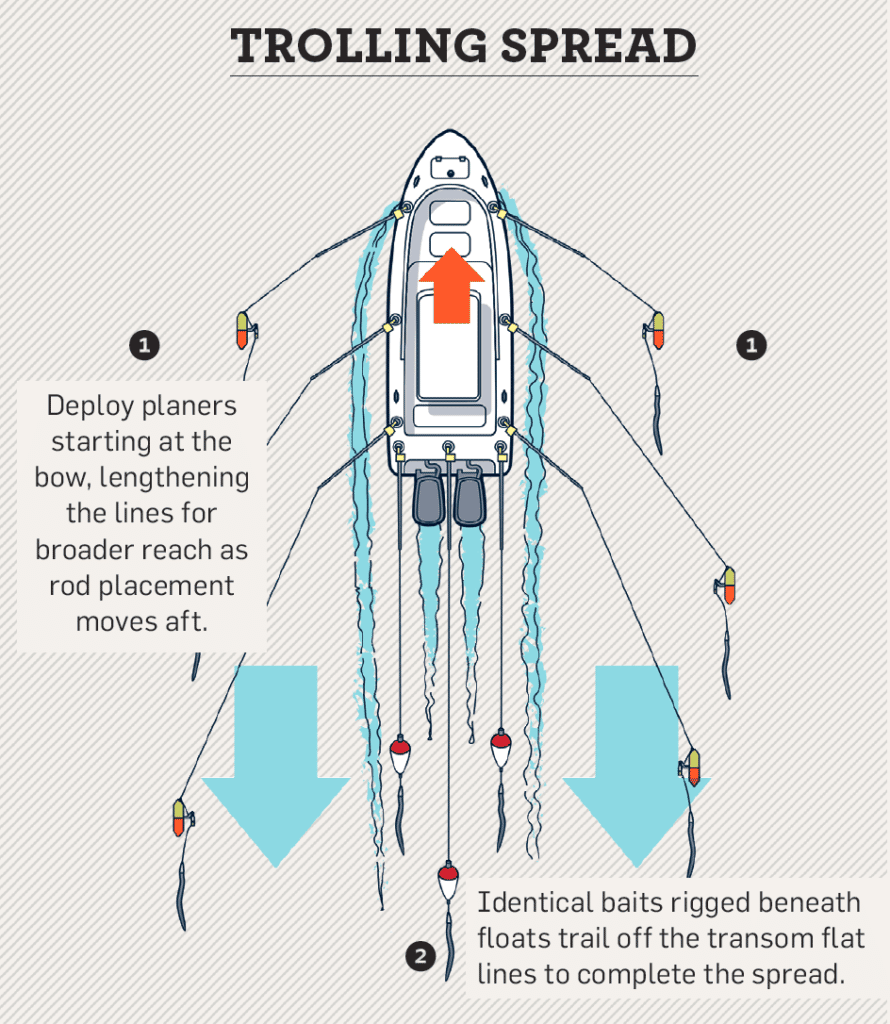
Create a Spread
As we approached our first spot, Many and his buddy Mike Greene put out the rods to build their spread. Rod holders spaced around the boat allow them to run four planers—at staggered distances—on each side, with up to three rods off the stern: one close, one at 75 feet, and the third at 150 feet or farther. He trolls slowly, usually less than 1½ knots, and bumps the single diesel in and out of gear to maintain just enough forward motion to allow the planers to reach their maximum lateral reach.
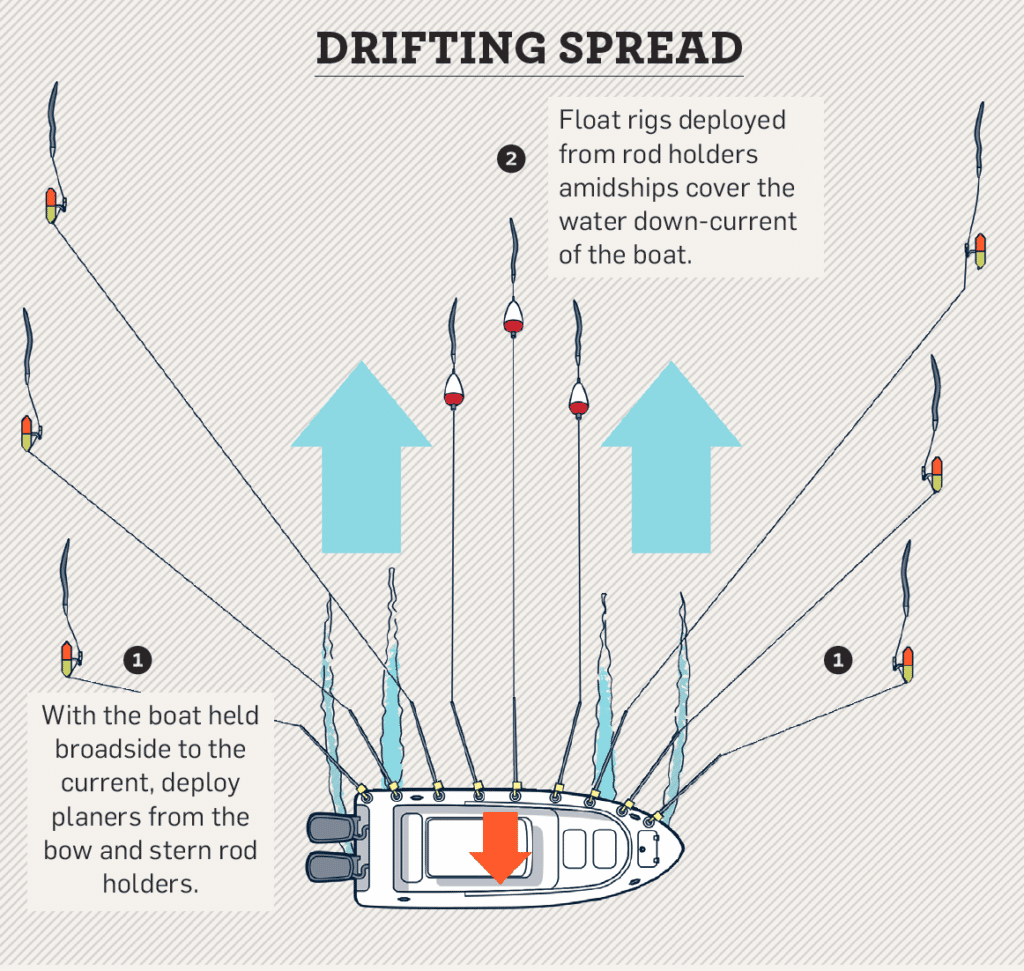
With a breeze of 10 knots or better, Many switches to drift-fishing, holding the boat broadside to the wind with bow and stern thrusters. He changes rod placement, putting the planer rods toward the bow and stern, and runs the outfits rigged with floats from amidships on the down-current side of the boat. “The technique works as well or better on the drift because the spread is even wider that way,” he says.
The Strike
As Many put out the baits, we saw a massive swirl near one of the planers, but that fish didn’t take. A couple of hours later, however, a bass crashed the eel behind the farthest planer on the starboard-side, the rod bent double, and the clicker screamed. After a good 20 minutes of back-and-forth, Greene brought the fish alongside the boat, and Many slipped his large landing net into the water and strained to lift the huge striper onto the deck.
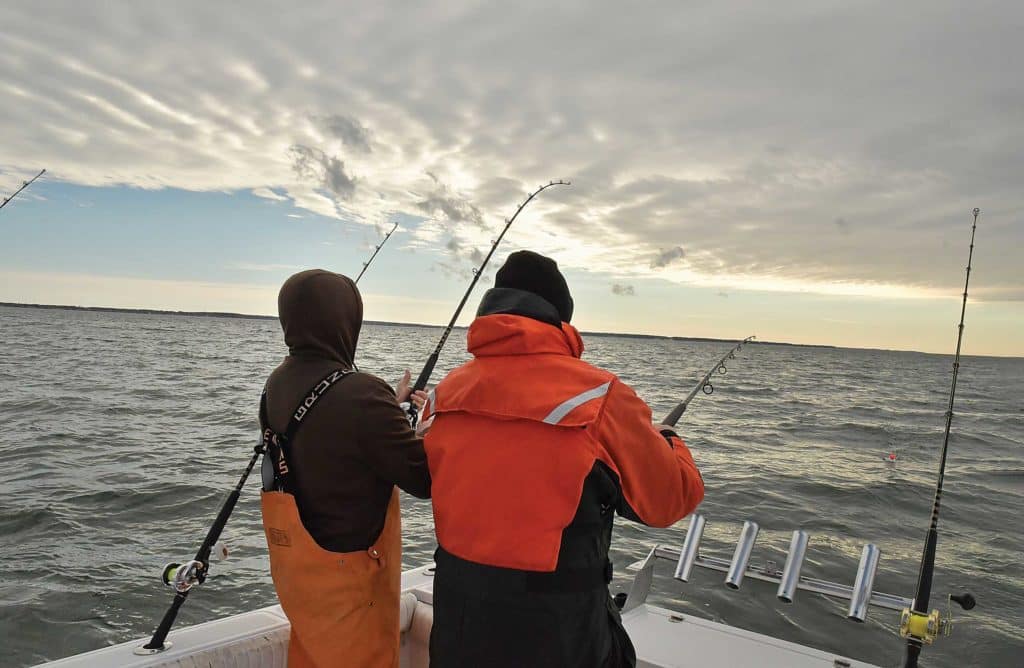
On an IGFA-certified hand scale, the fat female weighed 54 pounds. At 52 inches, she fell a bit short of the current release record, but a massive fish nonetheless. All the stripers caught aboard Tyman are released, including two that left with satellite tags implanted as part of the Gray FishTag Research program to study striper migrations.
Rigging Planers
These small, light planers tie directly to the main line with a snap swivel. A barrel swivel between the leader and the fishing line acts as a stop to prevent the planer from slipping down to the bait, and a release clip on a short steel rod creates the offset that steers the planer sideways. Many drops the hooked eel back 10 to 25 feet, then places the line in the release clip. The planer drifts away from the boat by the pressure of forward momentum. The rod goes in a holder with the reel in gear and the drag set at a moderate pressure so the fish sets the hook on the take. When a fish strikes, the clip releases the line, and the planer slides down to the swivel between the running line and the leader. Repeat the process for each outfit, letting out a bit more line each time; the longer the line, the farther the planers run off to the side, covering a larger swath of water.
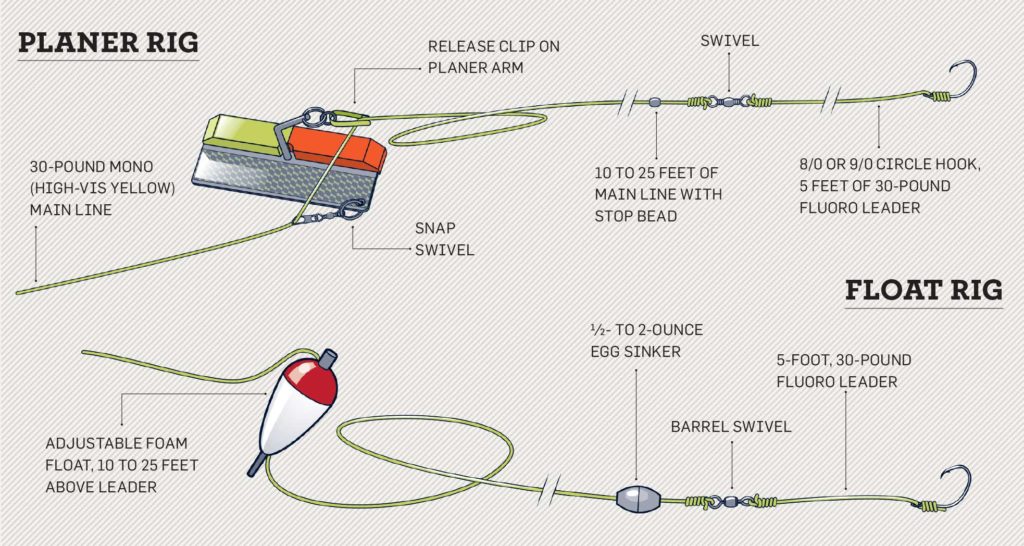
“When we land on the fish early in the day, we frequently can’t get more than a few baits in the water before we’re hooked up,” Many says. “This is common in coastal waters during the spring and fall run, when we encounter larger pods of big fish. I spend a lot of time researching where the major push of migrating fish is, and follow them north during the spring and south in the fall so I’m fishing in the right place at the right time.”
How successful has Many been in his big-striper quest? To date, he’s caught and released 47 bass over 50 pounds, including 17 since January 1, 2020, using eels and planers. The number of fish over 40 pounds is in the hundreds. The goal that eludes him is breaking 60, having missed the magic mark several times by less than half a pound.
And he isn’t satisfied to just keep doing what has been working; he is constantly tweaking things to find the next advantage. “I try and change up at least one thing every time I go out, fine-tuning the technique,” Many says. “I keep detailed records for each trip and the changes I’ve tried. The data it provides has proven invaluable.”









